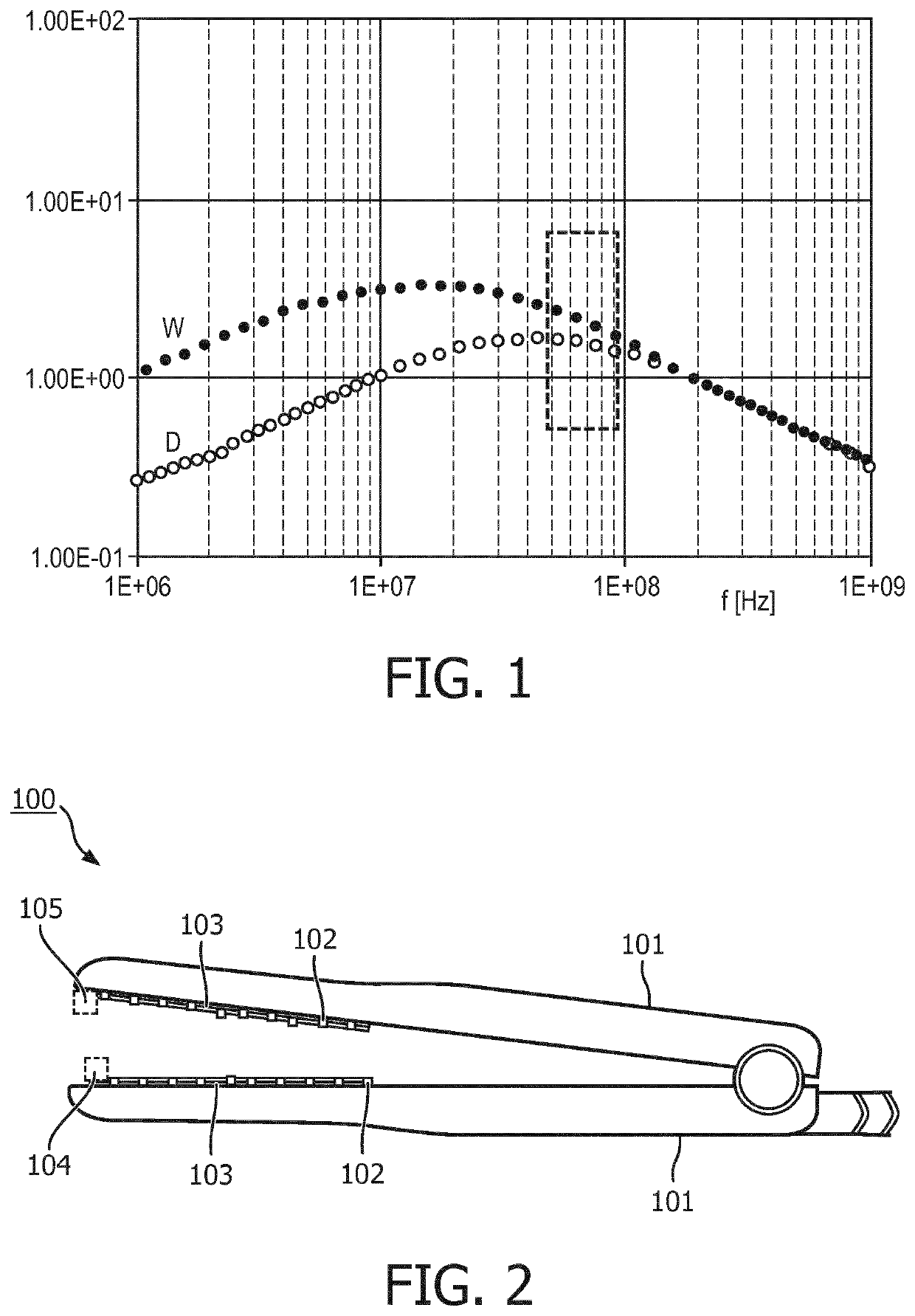Hair styling using dielectric heating
a dielectric heating and hair technology, applied in curling-tongs, curling-irons, hair equipments, etc., can solve the problems of dielectric heating of hair placed between electrodes, achieve optimal heating effects, prevent undesirable overheating effects, and lose tangen
- Summary
- Abstract
- Description
- Claims
- Application Information
AI Technical Summary
Benefits of technology
Problems solved by technology
Method used
Image
Examples
Embodiment Construction
[0009]FIG. 1 shows a graph of loss tangent vs. frequency, for wet hair W and dry hair D, respectively. The graph shows a relatively large difference in loss tangent between wet hair W and dry hair W for frequencies below 40 MHz, while the difference is much smaller for higher frequencies above 50 MHz, so that at such higher frequencies, it is not necessary to accurately and constantly measure the moisture content of the hair while styling it. While the graph shows that the same advantage also occurs at frequencies higher than 90 MHz, an efficacy of the RF heating is less at frequencies exceeding 90 MHz.
[0010]FIG. 2 shows an embodiment of a hair styling device 100 in accordance with the present invention, similar to our previous application WO 2017 / 080957 (attorneys' docket 2015PF01581), with the difference that in the embodiment of FIG. 2, radio-frequency (RF) heating is used instead of light. The hair styling device 100 comprises two jaws 101 which are hinged to pinch strands of ha...
PUM
 Login to View More
Login to View More Abstract
Description
Claims
Application Information
 Login to View More
Login to View More - R&D Engineer
- R&D Manager
- IP Professional
- Industry Leading Data Capabilities
- Powerful AI technology
- Patent DNA Extraction
Browse by: Latest US Patents, China's latest patents, Technical Efficacy Thesaurus, Application Domain, Technology Topic, Popular Technical Reports.
© 2024 PatSnap. All rights reserved.Legal|Privacy policy|Modern Slavery Act Transparency Statement|Sitemap|About US| Contact US: help@patsnap.com








